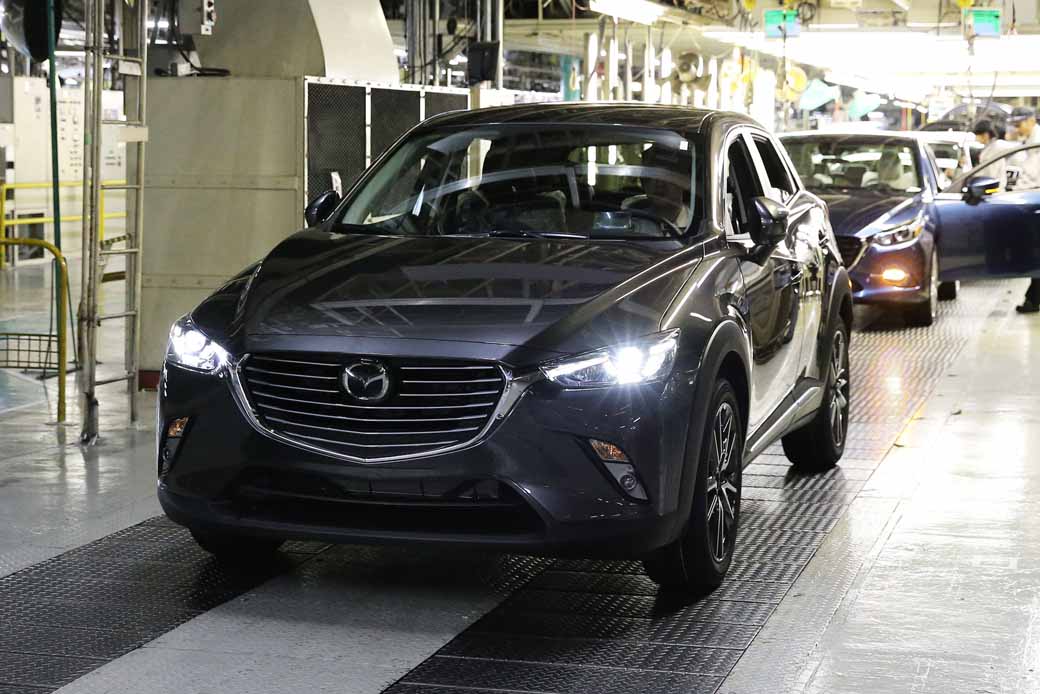Mazda Motor Corporation has started production of the Mazda CX-3 subcompact crossover at Hofu Plant No.1 in Yamaguchi, Japan. As demand for SUVs and crossovers increases globally, Mazda wants to strengthen their supply line to accommodate the growing segment.
Mazda’s strategy revolves around Bundled Product Planning and Common Architecture Concept, two vital elements of the Monotsukuri Innovation protocol employed by the automaker.
Bundled Product Planning
With this ideology, Mazda analyzes trends five to ten years into the future and builds a comprehensive plan regarding the vehicles coming to market within that time frame. Bundled Product Planning allows for shared elements among all vehicles, while identifying certain features that may be unique to only one specific vehicle. Overall, the approach is meant to capitalize on common vehicle structures, streamline manufacturing, and maximize curb appeal, as it relates to future products.
Common Architecture Concept
Mazda’s approach here examines fundamental characteristics of various components, common in all the automaker’s products. This is done regardless of vehicle type, segment placement, or engine option. These components, although different sizes, will ultimately share the same design, thereby making it possible to efficiently produce a variety of parts, regardless of the vehicle.
Flexible Production System
Equally important is a manufacturing process capable of producing up to 50 percent crossovers, which the automaker is incorporating. With rising demand in the segment, Mazda is determined to meet its global sales target of 1.65 million units, detailed in their Structural Reform Stage 2 medium-term business plan.
“We’re aiming for a production system that gives us more flexibility in terms of plants and models, so we can get our cars to customers around the world as quickly as possible,” said Masatoshi Maruyama, Managing Executive Officer in charge of global production. “Achieving this will help create a stronger foundation for our business.”
The Hofu Plant becomes the third Mazada facility to manufacture the CX-3, following Ujina Plant No.1 in Hiroshima, where production began two years ago, and AutoAlliance (Thailand) Co., Ltd., where production started in October 2015. Domestic production of the CX-3 has until now been confined to Ujina Plant No.1, which also produces the Mazda CX-5 and Mazda CX-9. Moving a portion of CX-3 production to Hofu enhances Mazda’s ability to supply these models while meeting the ongoing demand for SUVs globally.
Carl Anthony is Managing Editor of Automoblog and resides in Detroit, Michigan.
Photos & Source: Mazda North American Operations.


